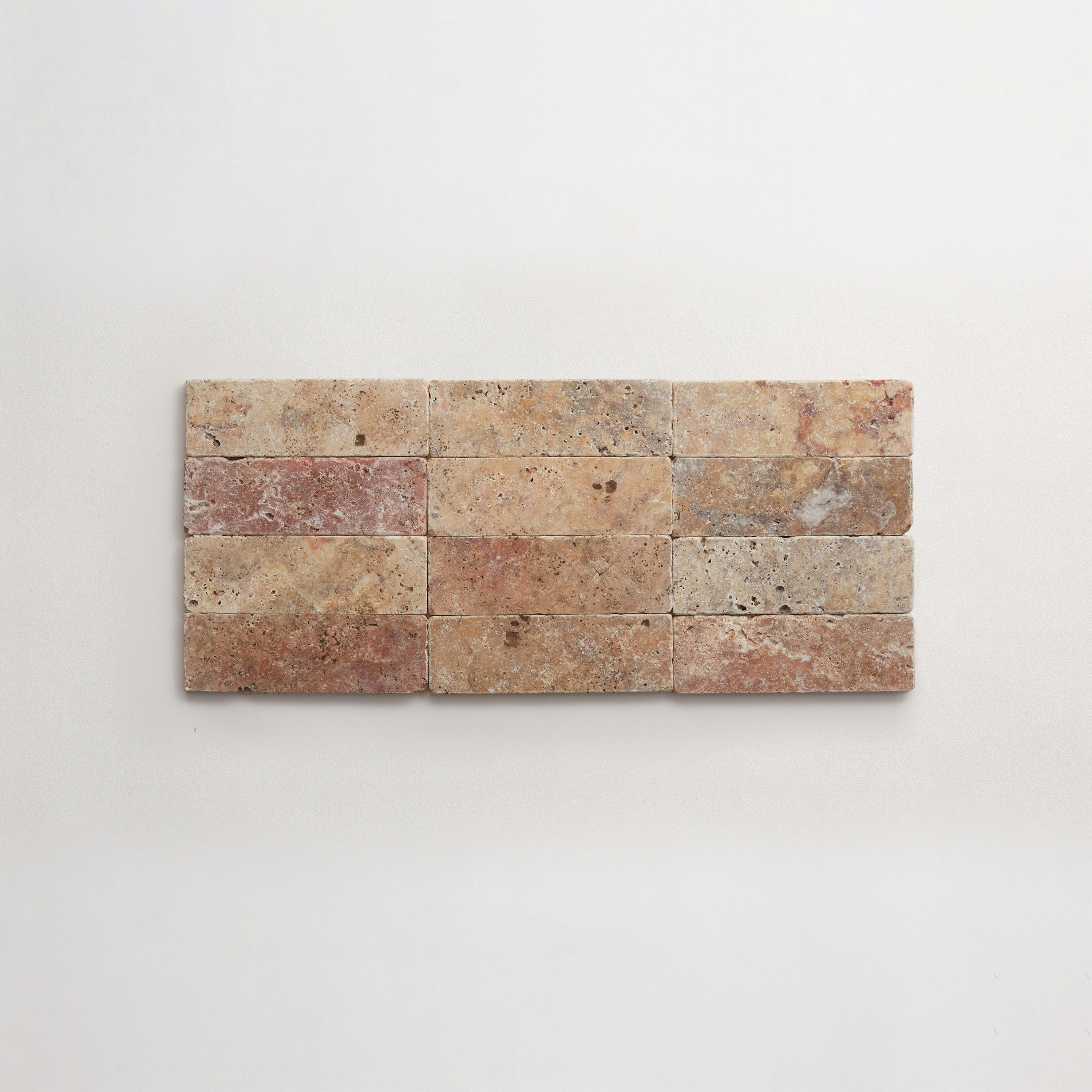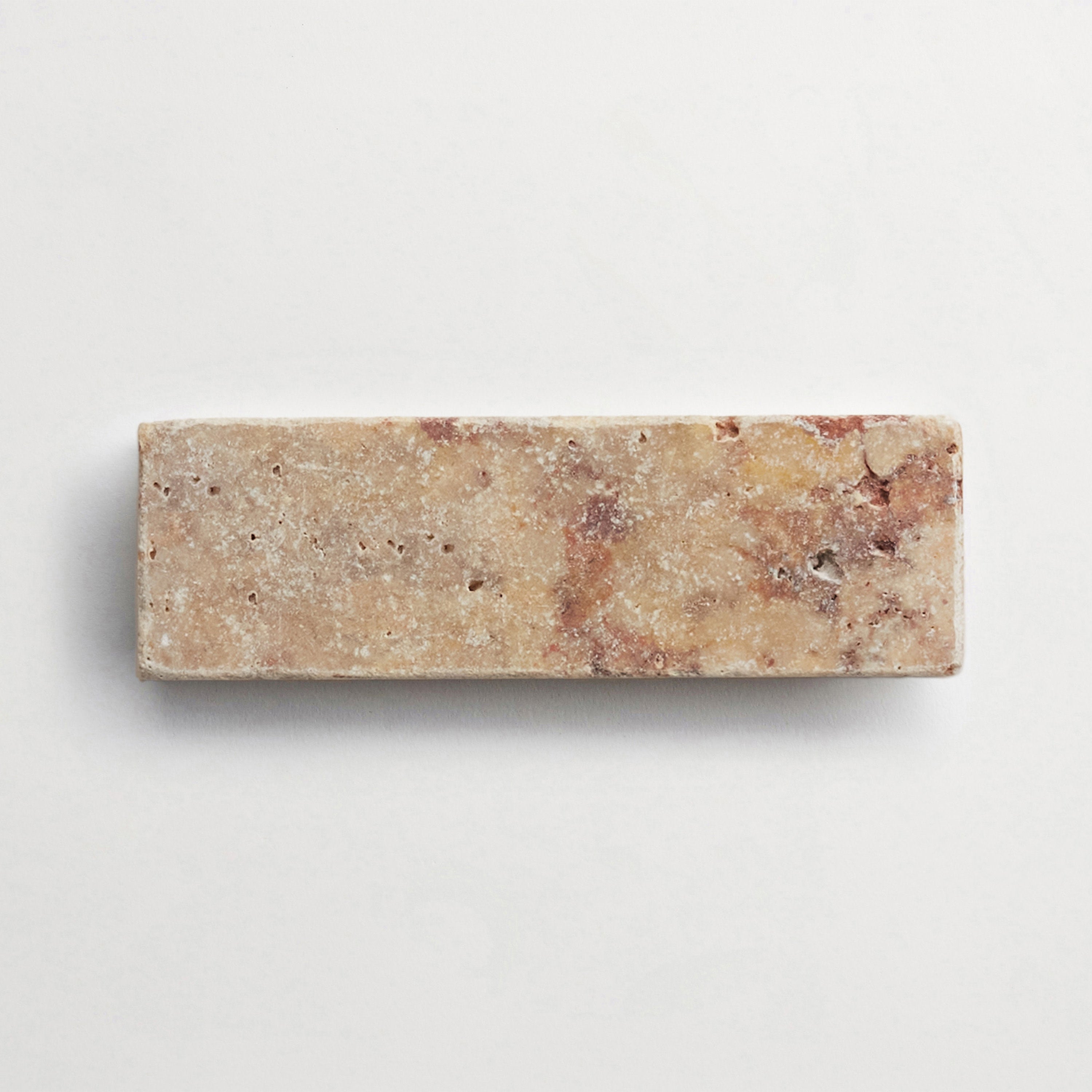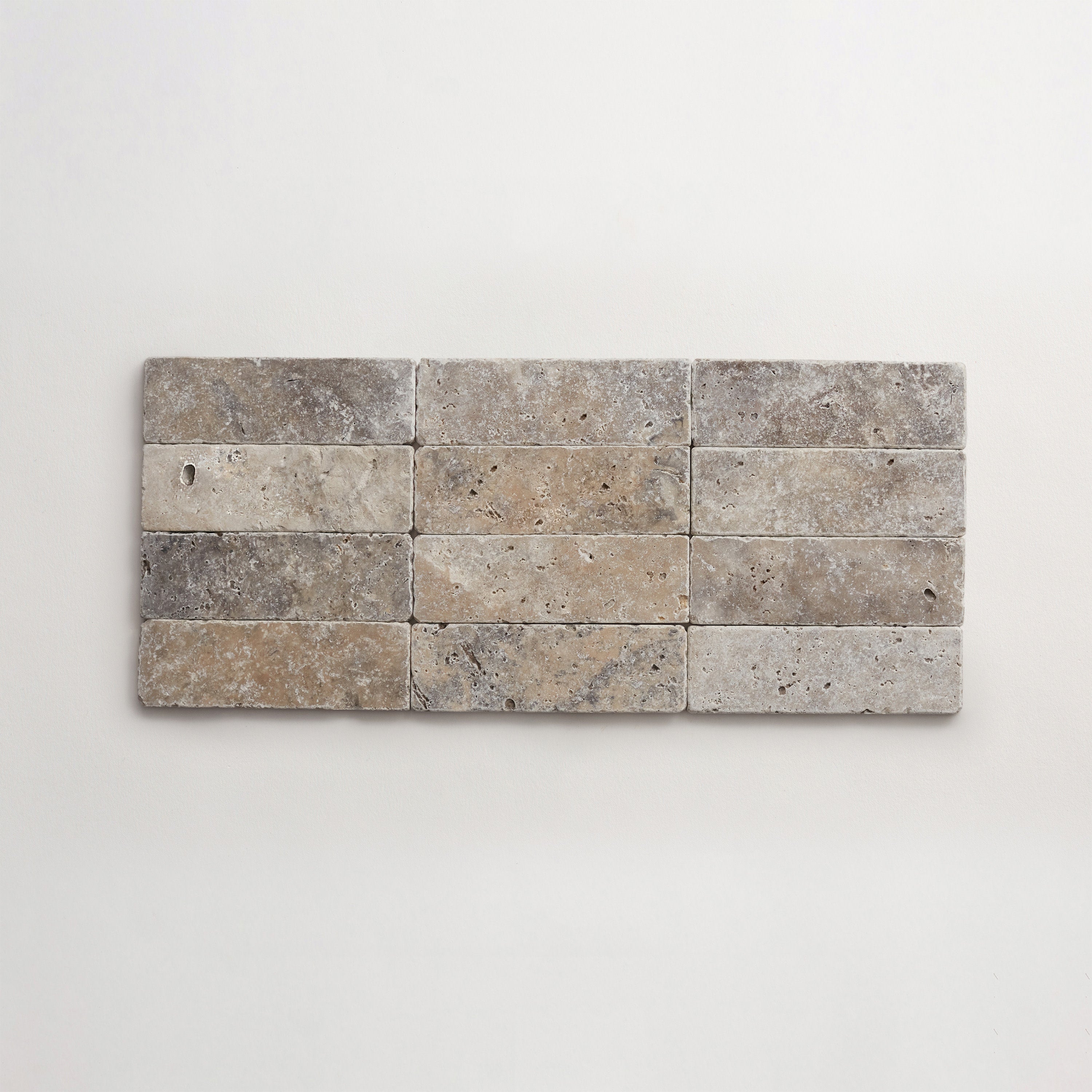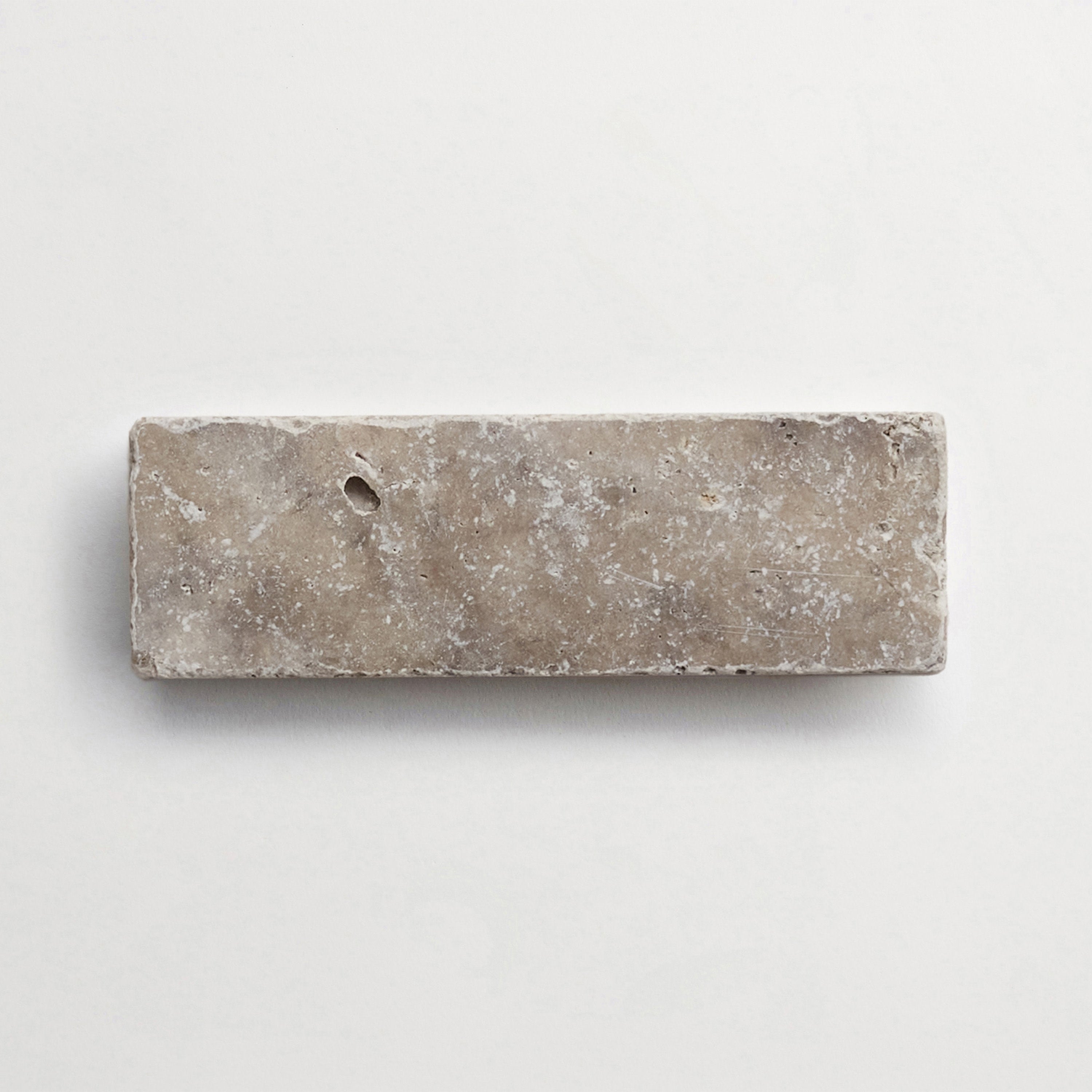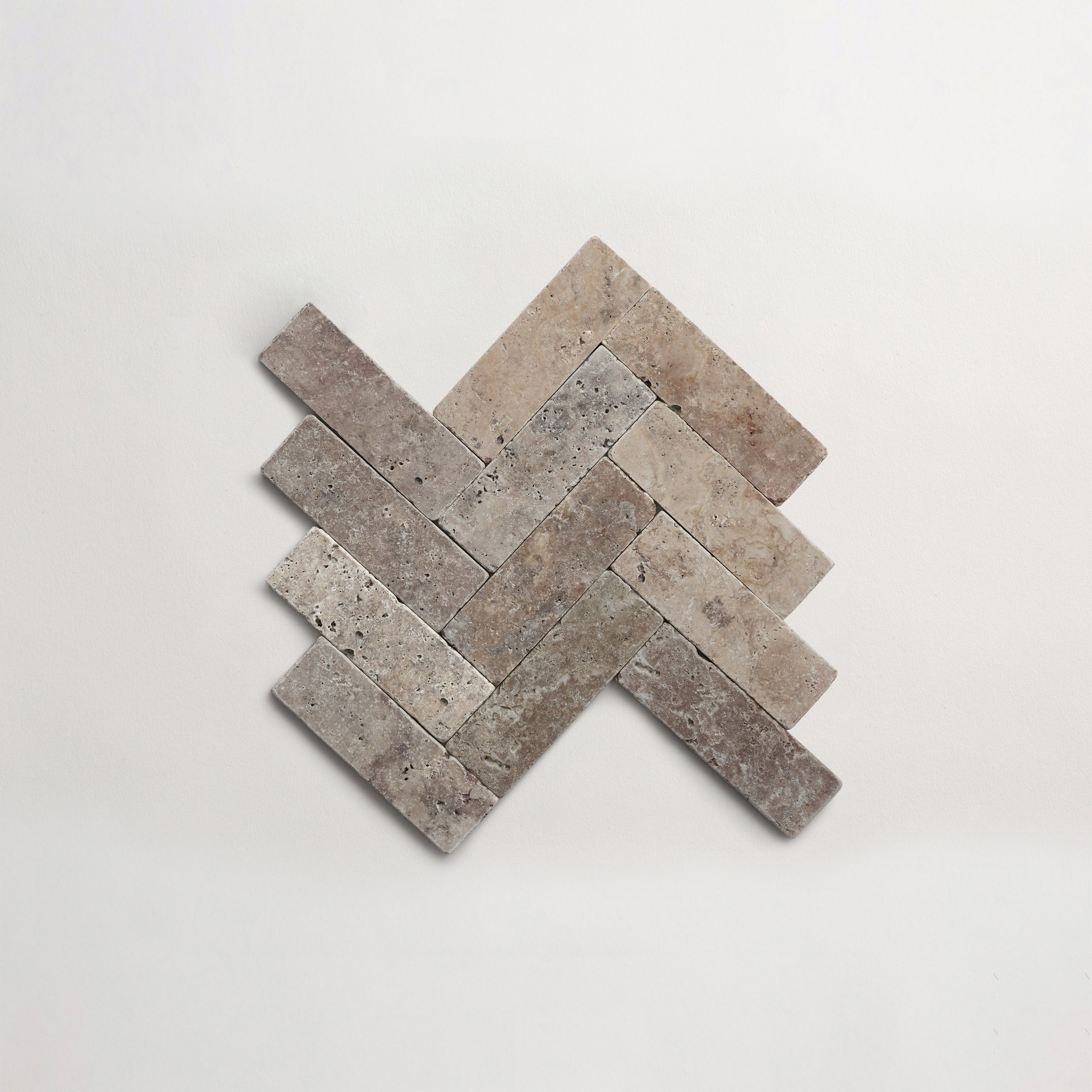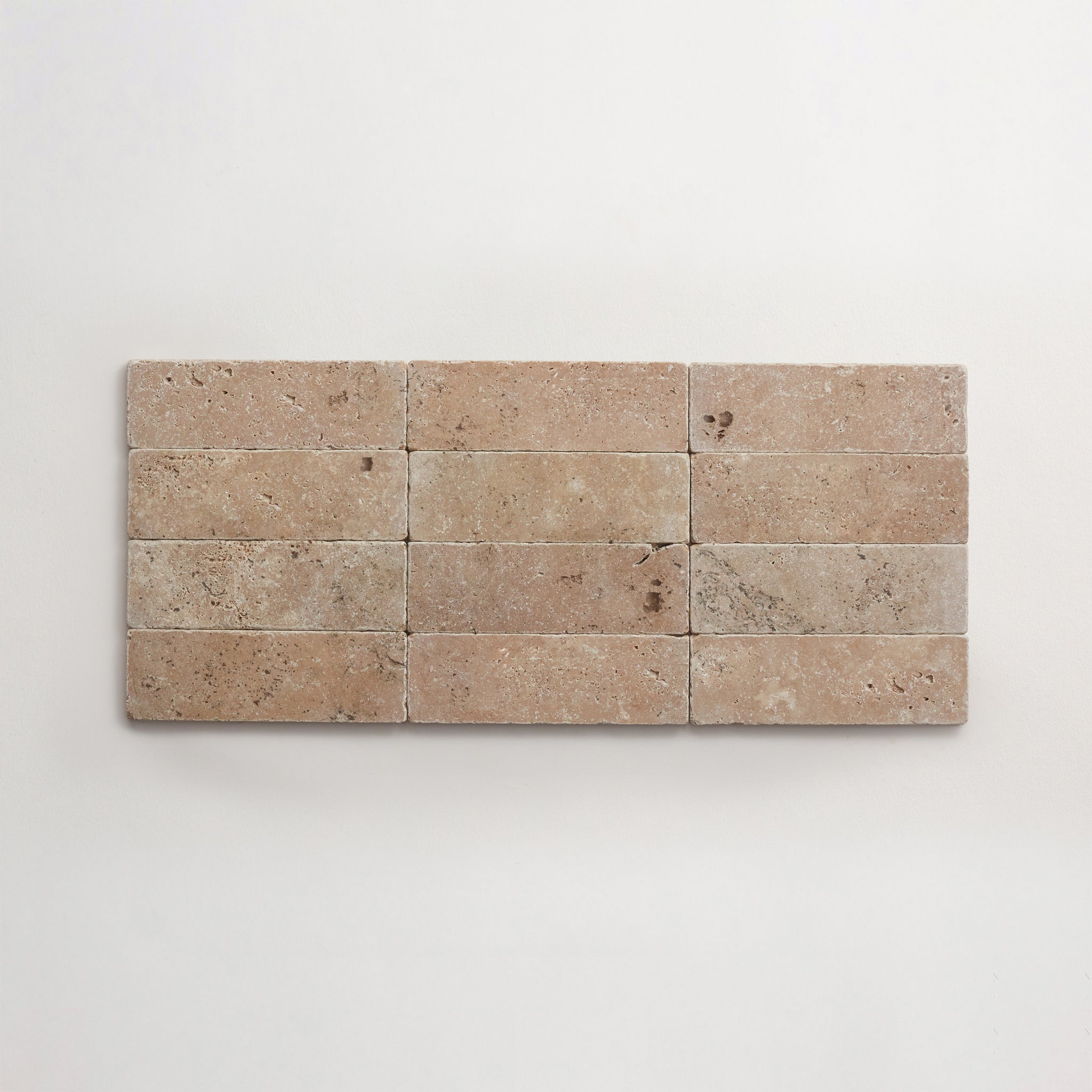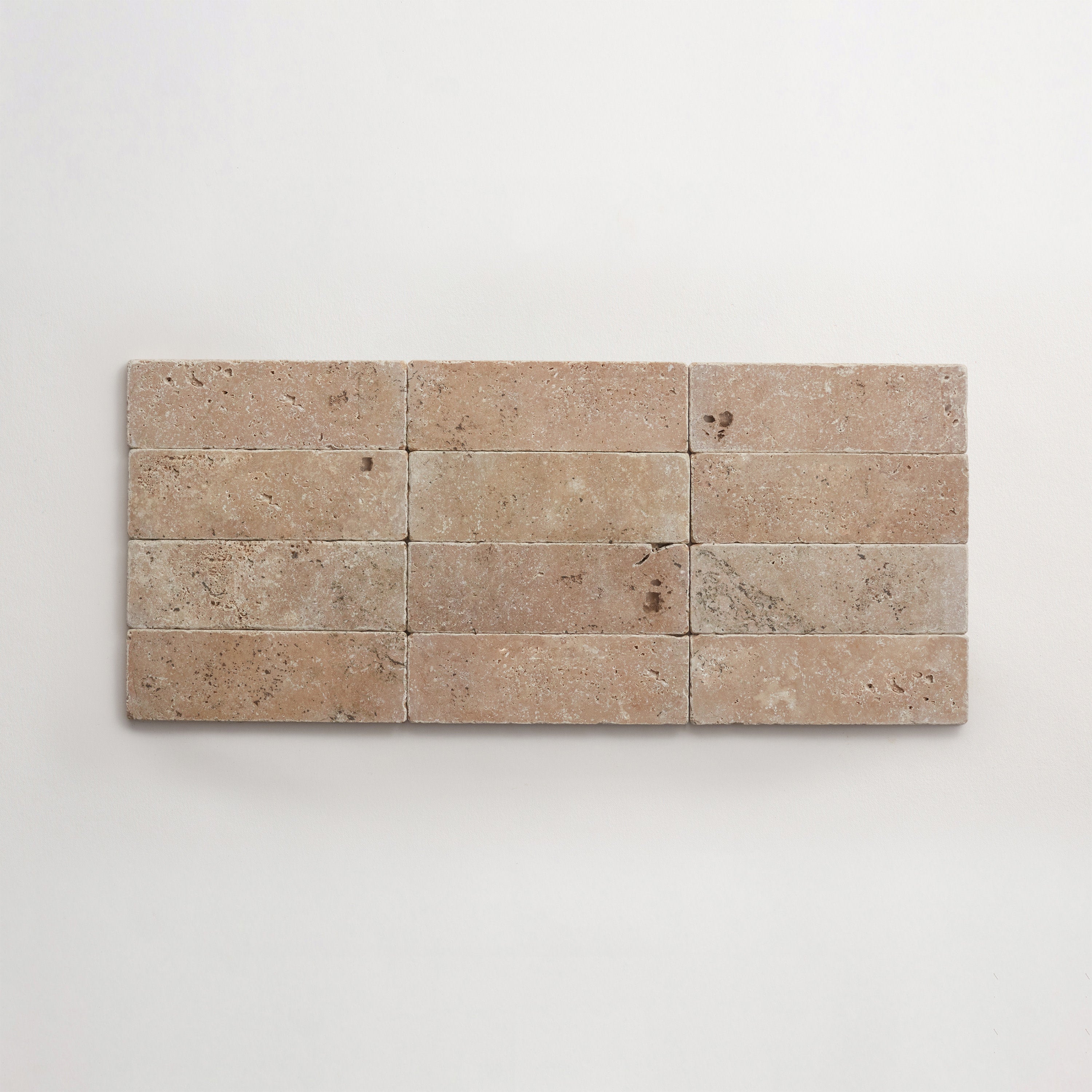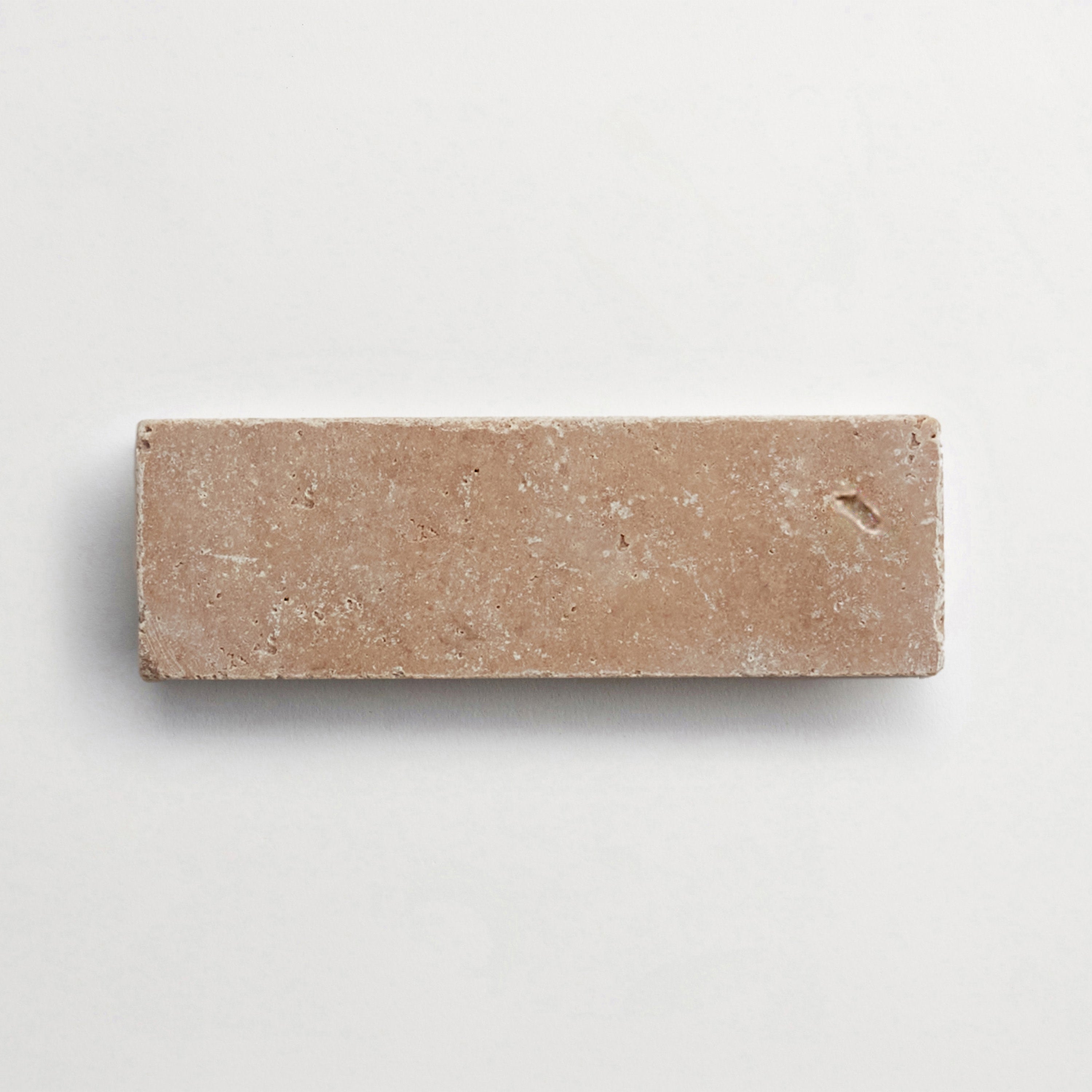your shopping cart is empty.

Pemberley Pavers, 4x4" Petite, Shale, Tumbled
Can Travertine Be Used for Outdoor Patios?
When it comes to designing an outdoor patio, few materials strike the balance of natural beauty, durability, and timeless appeal quite like travertine. This classic limestone has been used in architecture for centuries — and today, it remains a favorite among homeowners, designers, and architects looking to create sophisticated outdoor spaces.
Can Travertine Be Used Outside — and Is It Right for the Patio?
Yes — travertine can absolutely be used outside. It’s a natural stone that performs beautifully in outdoor settings when installed and sealed correctly. Travertine’s cool surface, textural variation, and durability make it a perfect choice for patios, pool decks, and pathways where longevity and design matter. It also happens to be among the best driveway paver materials out there.
Key Benefits of Using Travertine Outdoors
There are many reasons to love travertine — its natural beauty, stay-cool properties, and slip resistance, for starters.
Natural Beauty and Timeless Aesthetic
Travertine offers organic movement and warm, neutral tones that harmonize effortlessly with natural landscapes. Its subtle veining and soft color variations make it a versatile foundation for both rustic and modern designs, ensuring it’s an excellent choice for a range of outdoor tile projects. If you’ve ever asked "is travertine tile outdated?" the answer is a resounding no.
Stays Cool Underfoot in Hot Weather
Unlike dense materials such as granite, travertine stays comfortably cool underfoot — even in direct sun. This makes it a best choice for pool decks and sunny patios where barefoot comfort matters. Travertine can help create inviting spaces that remain usable throughout the heat of the day.
Slip Resistance and Safety Features
Travertine’s textured finishes, like tumbled or brushed surfaces, provide natural traction that enhances safety. These non-slip outdoor tiles make travertine a solid choice for wet areas such as pools or outdoor kitchens, where both design and performance are key to a successful installation.
Works Across a Range of Design Styles
Travertine’s versatility shines in every design era. Its warm, classic tones suit Mediterranean courtyards and traditional terraces, while its honed or chiseled finishes can create sleek, modern patios. The result: a material that adapts beautifully across architectural styles and project aesthetics.
Climate Considerations for Outdoor Travertine
Travertine functions beautifully in a wide variety of climates, but there are some key factors to consider.
Performance in Hot, Sunny Climates
In warm, arid regions, travertine performs exceptionally well. Its light tones reflect sunlight, reducing heat absorption and fading. UV exposure has minimal effect, ensuring the patio’s surface retains its color and texture for decades — one reason travertine remains an excellent choice for desert climates.
Managing Freeze-Thaw Risk in Colder Regions
In areas with freezing temperatures, moisture can expand within the stone. To mitigate freeze-thaw damage, choose dense, high-quality travertine and ensure proper installation with adequate drainage. Sealing with a penetrating sealant helps prevent water absorption, preserving your natural stone pavers through years of seasonal changes.
How Travertine Handles Humidity and Rainfall
Travertine naturally absorbs some moisture, but when properly sealed, it performs beautifully in humid and rainy environments. Regular sealing protects against staining and water infiltration, making travertine suitable even for coastal or tropical climates where moisture levels are consistently high.
Tips for Choosing Finish Based on Your Climate
Generally speaking, travertine finishes are versatile and can be used in a variety of climates. In wet or cold areas, though, a tumbled finish can help improve traction and prevent slipperiness.
Choosing the Right Finish and Format for Outdoor Use
There are many types of outdoor tiles out there, especially in the world of travertine. Here are a few more considerations to keep in mind for an outdoor patio.
Understanding Tumbled, Honed, Brushed, and Chiseled Options
Tumbled travertine has softened edges and a timeworn look ideal for rustic patios. Honed offers a matte, smooth surface with understated elegance. Brushed finishes add texture and slip resistance, while chiseled edges lend an aged, artisanal character. Each of these creates a different aesthetic experience, so choose the finish that most closely aligns with the goals of your project.
Tile vs. Paver: Which Format Fits Your Project?
Travertine tiles are thinner than pavers and are typically used for covered patios or verandas, while pavers are thicker and built for driveways or heavy foot traffic. The right format depends on your project’s demands — tiles for light, decorative surfaces, and pavers for durable, structural outdoor designs. When in doubt, check a product’s technical specs for suitable applications.
Visual and Functional Differences Across Finishes
Each travertine finish balances appearance with performance. A tumbled or brushed surface provides extra grip and softness underfoot, while a honed finish offers clean, modern lines. Evaluating texture, tone, and feel ensures the patio’s natural stone tiles complement both aesthetic goals and safety needs.
Maintenance and Longevity of Outdoor Travertine
Travertine is remarkably resilient, but it does need a little TLC to help maintain its beauty.
Why Sealing Matters — and How Often to Do It
Travertine is porous, so sealing is essential to prevent water penetration and stains. Your contractor should apply a penetrating sealer upon installation, then reseal every one to three years depending on exposure. This protects the stone against weathering, preserving its beauty and function over time.
Cleaning Tips and Stain Prevention
In terms of travertine stain removal, make sure the homeowner understands that they should use pH-neutral cleaners and soft brushes to maintain surface integrity. They should also avoid acidic solutions like vinegar that can etch the stone. In addition, they should promptly address spills — especially when they involve oils or organic matter — to prevent discoloration and maintain the patio’s refined, natural finish.
Long-Term Care and What to Expect Over Time
With proper sealing and gentle cleaning, a travertine patio can last for decades. That said, over time, travertine does develop a subtle patina that enhances its natural character. (How much of a patina depends on climate, weather conditions, and how often it’s sealed.) You can expect the stone to see minor tonal shifts and soft wear patterns that tell a story of use and enduring craftsmanship.
How to Design a Travertine Patio That Elevates an Outdoor Space
Travertine can level-up the patio in so many ways. Let’s explore just a few of the possibilities.
Mediterranean Courtyards and Classic Looks
For timeless elegance, opt for warm beige or ivory travertine paired with wrought iron, terracotta planters, and climbing vines. This creates an old-world charm ideal for courtyard-style patios and travertine pool decks that invite relaxation and connection to nature.
Sleek, Minimalist Patios with a Modern Edge
A honed or brushed finish in cooler tones can transform travertine into a minimalist statement. Use large-format tiles with tight grout lines for visual continuity. Pair the stone with steel accents, linear furniture, and muted greenery for a clean, contemporary look that complements architectural precision.
Layering in Wood, Metal, and Greenery
Travertine pairs beautifully with natural materials. Blend wooden seating, brushed metal planters, and soft greenery to add contrast and warmth. This combination highlights travertine’s organic textures and makes it a perfect choice for outdoor spaces that merge structure and softness.
Layout Ideas: Grids, Patterns, Borders, and Inlays
Travertine’s versatility extends to its layout. A grid pattern offers timeless simplicity, while a herringbone pattern brings depth and movement. Add contrasting borders or inlays using different colors or finishes to define zones and elevate the patio’s visual rhythm.
What to Look for When Selecting Travertine
Not all travertine tiles and pavers are made equal. Here are a few key characteristics to look for.
How to Identify High-Quality Stone
High-quality travertine has consistent color, minimal filler, and a dense structure. Avoid tiles with excessive holes or uneven tones. Inspect edges for precision and surfaces for uniform texture (remembering that all natural stone has lovely imperfections, of course). A product’s technical specs should also shed light on its durability.
Country of Origin and Craftsmanship Indicators
Travertine sourced from Italy, Turkey, and Mexico is renowned for its quality and distinctive character. These regions produce stone with tight grain and stable composition. Look for reputable suppliers who prioritize expert cutting, finishing, and grading to ensure lasting performance in outdoor environments.
Final Considerations Before You Begin Your Project
We’ve said it before — an installation is only as good as its installer. Once you’ve selected the right travertine for your project, you’ll want to consider the following.
Installation Best Practices
Proper installation determines the lifespan of a travertine patio. An experienced professional will use a mortar bed for secure adhesion, ensure full coverage beneath tiles or pavers, and maintain proper slope for drainage. They will also high-pressure washing and seal the stone after grouting for best long-term results.
Working with Landscape Designers or Architects
Partnering with a skilled landscape designer or architect ensures the travertine patio integrates seamlessly with the broader outdoor environment. These professionals understand how to choose appropriate finishes, align materials with the climate, and achieve design cohesion across patios, walkways, and surrounding architecture.
Planning for Longevity and Visual Cohesion
Always think long-term when designing with travertine. Choose neutral tones and patterns that complement both current and future design updates. Plan transitions between hardscape and softscape elements to create visual harmony — a design philosophy that enhances both function and enduring appeal.
Conclusion
Travertine is a versatile, elegant, and enduring choice for outdoor patios. When selected thoughtfully, sealed properly, and maintained regularly, it delivers both beauty and resilience in every climate. To explore options that embody craftsmanship and timeless design, we recommend starting with the Pemberley Pavers collection, which is a shoo-in for elevated outdoor living.
-
Pumice
-
Pemberley Pavers
:
-
Aperto
-
4
" x
-
4
" x
-
⅛
"
-
sqft
/
$
-
Shale
-
Pemberley Pavers
:
-
Florilegium
-
8
" x
-
8
" x
-
⅞
"
-
sqft
/
$
-
Sand
-
Pemberley Pavers
:
-
Piatta
-
4
" x
-
16
" x
-
⅝
"
-
sqft
/
$








